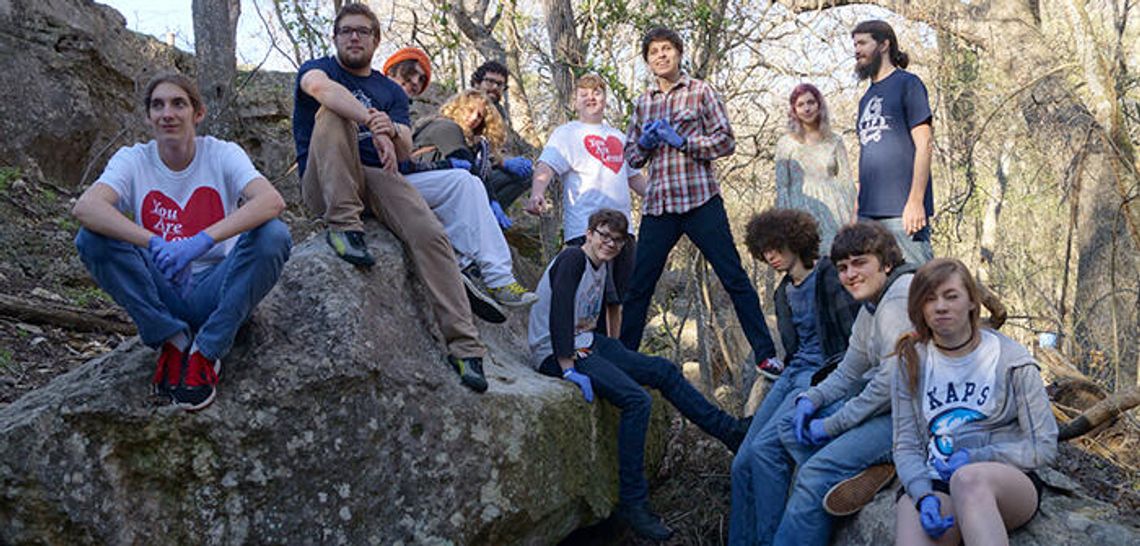Editor’s note: Earlier this month, officials with IDEA Public Schools, a south Texas charter school system, announced plans to build a 110,000 square foot, $20 million facility on Goforth Road in Kyle. The campus is expected to serve 1,400 students. Our story this week focuses on the Katherine Anne Porter School in Wimberley and how they operate as one of the few charter schools in Hays County.
[dropcap]F[/dropcap]or the better part of 23 years, Coni Wilson has operated in the business of education.
While working at a charter school in Colorado “she fell in love” with alternative schools. Since then, Wilson, who is now the superintendent of the Katherine Anne Porter School (KAPS) in Wimberley, has supported the charter school movement as a way to offer parents and students a choice.
But she also believes the campus isn’t in direct competition with area school districts, or IDEA Public Schools, which are eyeing a possible new campus in Kyle.
“I believe (KAPS) can serve a unique population in a way where there is enough of the pie to go around,” Wilson said. “I like to think from the perspective of abundance, rather than scarcity.”
What exactly are charter schools?
A charter school, Wilson said, is a contracted campus with the state that differs from the traditional independent school district (ISD). Charter schools such as KAPS, a liberal arts focused alternative high school that serves seven counties, including Hays, must “prove” how they’re different from ISDs, Wilson said.
KAPS programs center on the arts and creative thought. The school’s programs focus on music, traditional art courses and theater, and the school partners with the EmilyAnn Theater in Wimberley.
Generally, charter schools also offer smaller class size ratios than typical public schools.
At KAPS, the average class size is 14 students, with the total school population fluctuating between 160 and 170 students. Students who attend run the gamut from the extremely gifted and talented to those who struggle in school, Wilson said.
Charter schools differ from private schools as they don’t charge tuition and are open for anyone to attend. Charter schools are also subject to Texas Education Agency (TEA) accountability standards for academics and finances.
“If a teacher can build a relationship with a student, it can make a difference.”
Coni Wilson, KAPS teacher
However, KAPS regulates how many students they take in per year. Amy Crowell, communications director at KAPS, said if there are more students who apply than they can accommodate, the school must conduct a random lottery to meet their numbers.
Wilson said teachers “seek us out” as they want a little more freedom in the classrooms. Charter schools allow teachers to have flexibility for “blended learning,” which equates to more one-on-one instruction.
“If a teacher can build a relationship with a student, it can make a difference.” Wilson said.
According to the TEA website, teachers at open-enrollment charter schools must have at least a bachelors degree. Those who teach bilingual education or special education also must have certification with the state.
Schools can also set additional parameters for teacher certification requirements.
“In terms of requirements for teachers, we do prefer that our teachers have a state teacher’s certification,” Crowell said. “Most of our teachers are certified in several areas.”
How can charter schools affect public schools?
One possible effect charter schools could have on public schools is a possible drop in state funding. Public schools are partially funded by average student attendance.
Tim Savoy, Hays CISD public information officer, said Hays CISD’s growth would be able to offset the number of students who may attend charter schools.
Savoy said IDEA public schools, which is planning a $20 million campus in Kyle, has reached out to district leaders regarding some of their plans. IDEA has not made a formal presentation to the school board.
Even if IDEA pulled students just from Hays CISD, the district would still have a net gain of students.
“If there were large numbers of students leaving the district, we could start to see an impact,” Savoy said.
Other opportunities could include possible partnerships between public and charter schools. Examples include sharing facilities, such as athletic stadiums or performing arts centers, Savoy said.
With the added competition, charter schools may also be a way for public school districts to improve education, which hasn’t changed much since 1900, Savoy said.
The challenge for school districts is updating education standards to meet innovative and technological advancements of the 21st Century.
At the end of the day, public schools must reflect the needs of the students and parents.
Ultimately, Savoy said having choices, no matter public, charter or private, makes everyone stronger.
“We have to perform and provide an education that parents want and is good for the student,” Savoy said.










